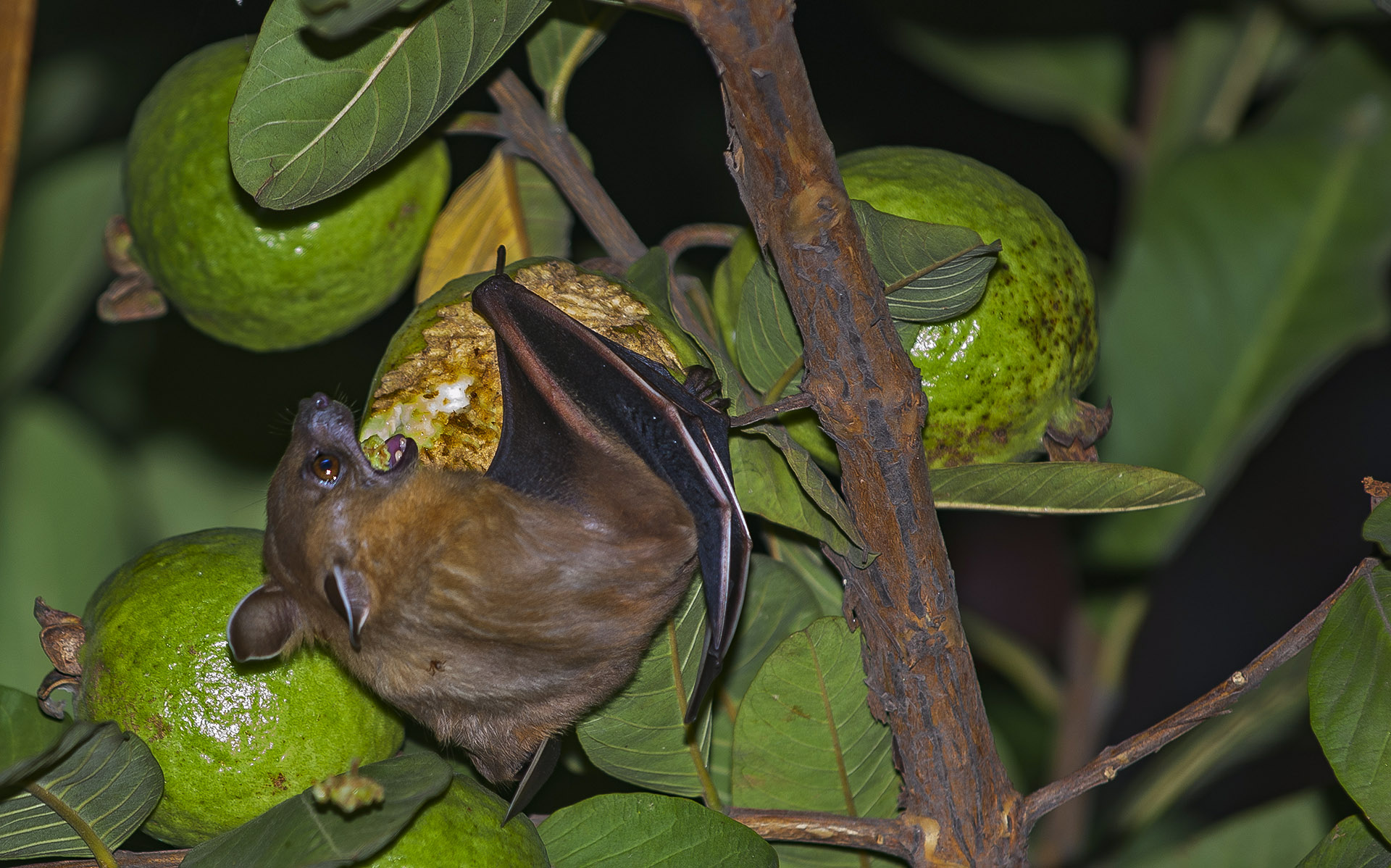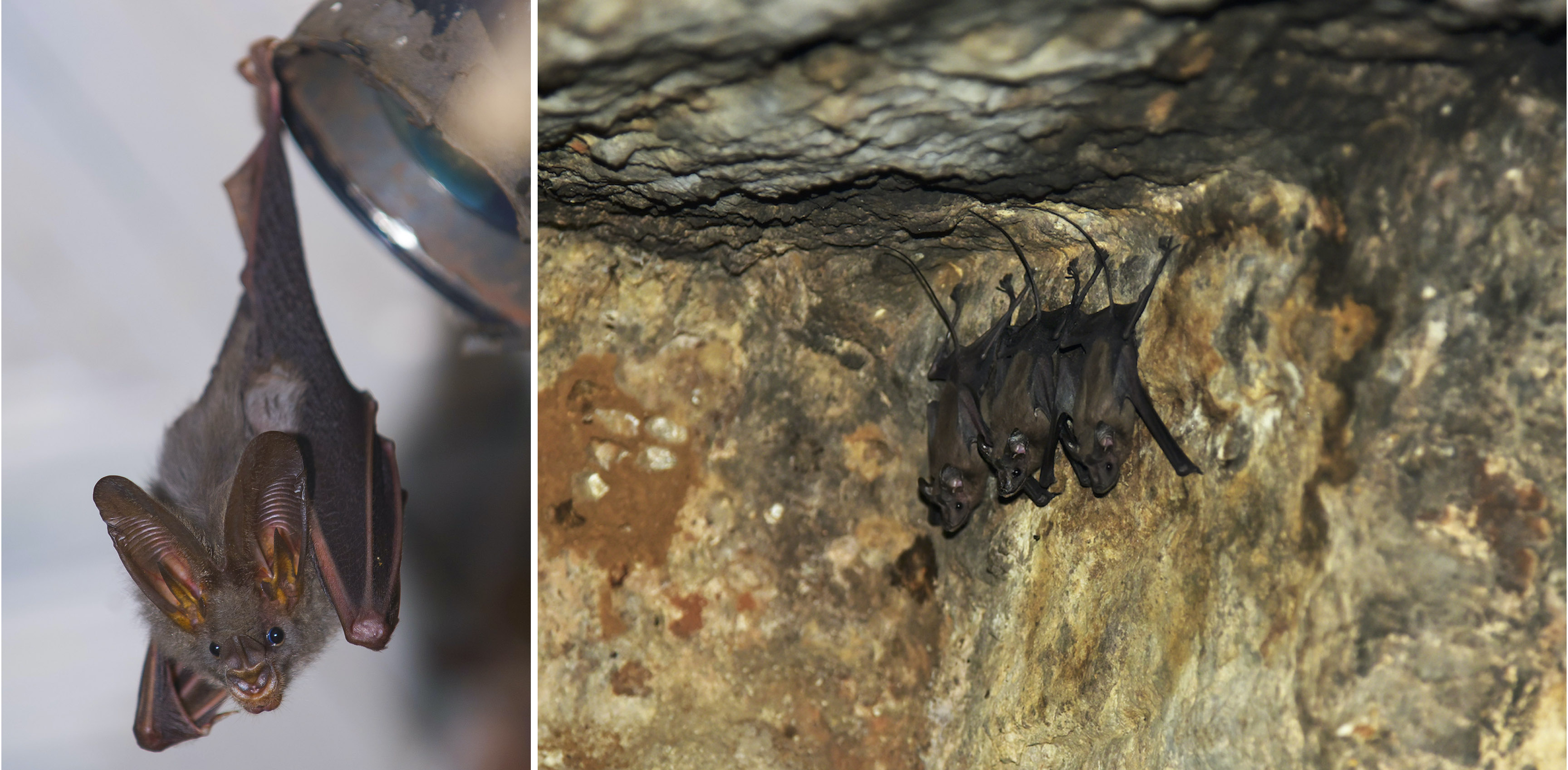 Listen to this article
•
15:34 min
Listen to this article
•
15:34 min
When the high-pitched barking of his dog awoke Rohit Chakravarty one October night in 2007, he stepped out to look for what was disturbing the animal. That’s when he found a fruit bat feeding on a rotten banana in the garbage can outside his home in Nagpur. “I was fascinated,” he says. Later, on enquiring about these creatures in the neighbourhood, he heard fruit vendors complain that bats often ate their wares. He realised how common these mammals were even in an urban Indian landscape and has been studying bats ever since. Currently pursuing his PhD at the Leibniz Institute for Zoo and Wildlife Research at Berlin, Germany, he says that bats and humans have lived in close proximity for centuries.

Intermediate horseshoe bats are insectivorous creatures that live mostly in caves. They are known to harbour a coronavirus called RaTG13 that is around 96.2 per cent similar to SARS-CoV-2, the virus that causes Covid-19. However, because it is not a 100 per cent match, doubts about the exact origins of Covid-19 remain. Cover photo: Binturong-tonoscarpe/Shutterstock
The Spillover Mystery
Since early 2020, bats have become the subject of intense curiosity, debate, and revulsion, especially after the World Health Organisation reported that the dreaded novel coronavirus, showed a similarity to a virus that first originated from horseshoe bats, and that it could have been transmitted to humans through an intermediate animal host.
Despite these claims from the scientific community, chiropterologists (or bat researchers) like Kasturi Saha of the Indian Institute of Science (IISc) Bengaluru, say there is no conclusive evidence that it was transmitted by a bat. “We still don’t know how humans got Covid-19,” she says.
This is indicative of the growing disconnect between virologists studying viruses, and chiropterologists studying the species of bats that harbour them. In a paper published in the New England Journal Of Medicine in February 2020, virologists say that the RNA (genetic) sequencing of the novel coronavirus closely resembles the many viruses that silently circulate in bats, and that “spillover events”, where the virus jumps from animals to humans, once thought rare, are becoming increasingly common. Bat researchers on the other hand argue that spillover events are rare, and that epidemics happen entirely because of human behaviour such as deforestation and increased human contact with wildlife.
Adding to the scientific uncertainty is a great deal of misinformation. Conspiracy theories have been doing the rounds on WhatsApp. Videos of people supposedly eating bat soup in China, or speculation that the virus was man-made in a Wuhan laboratory, caused much confusion over how the virus was transmitted and spread.

Bat Facts
Researchers studying bats in India point out that misconceptions about these winged mammals, existed well before coronavirus battered their reputation. For instance, contrary to popular opinion, bats aren’t blind. Fruits bats especially have well developed vision, says Chakravarty. Insectivorous bats have poor vision and rely on echolocation to find their prey, especially to track down moving insects. Bats emit high-pitched soundwaves and based on the echo or how these sound waves bounce back to them, they’re able to judge the location of moving objects. Researchers are recording the echolocation frequencies of different bats to identify each species. Over two consecutive nights, in a sliver of land spread over a 50 m around Kedarnath Wildlife Sanctuary in Uttarkhand, a small area that he could monitor on his own, Chakravarty says he was stunned when he recorded as many as 15 different species of bats. “It indicates how rich the diversity of Indian bats is and how little we know about them,” he says.
Besides a lack of awareness, people mostly think of bats as unhelpful creatures, says Rahul Prabhukhanolkar, who runs the Indian Bat Conservation Research Unit (IBCRU), an online database and research resource, aimed at recording the diversity and distribution of bats across the country. “Seldom do we realise that bats have immense economic value, especially when it comes to pest control: they play a critical role in our ecosystem. Some insectivorous bats eat up to a thousand insects a night, many of these disease-causing mosquitos,” says Prabhukhanolkar.

In addition to this, he says, bats pollinate plants and disperse seeds. The durian fruit which is a huge favourite with many in Southeast Asia has a single pollinator — the fruit bat. And guano, or bat droppings, is used as fertiliser. Many of these useful qualities are overlooked, because a number of infectious diseases in recent years have been traced to bats. They are suspected to be the source for the outbreak of Ebola, SARS, and MERS and have been conclusively linked to the outbreak of Nipah.
Disease Transmission
EcoHealth Alliance, a US-based non-profit scientific research body, has collaborated with the Wuhan Institute of Virology in China on bat research for 15 years. According to media reports, out of the 15,000 virus samples EcoHealth Alliance collected from bats, they identified 400 new coronaviruses, many of which are believed to be infectious to humans. Rumours that the virus leaked from a lab in Wuhan have had severe consequences for this research with the US government withdrawing funding and support for this study. When funding for bat related research is withdrawn, researchers say, it limits our opportunity to learn about these creatures and their remarkable resilience.
While it is true that bats are reservoirs of many viruses, that shouldn’t be a reason to fear them, according to Prabhukhanolkar. “We need more research into how a bat’s body can act as a host to many viruses without being affected by it at all. We really don’t know what gives these creatures their immense immunity,” he says.

Baheerathan Murugavel, a PhD researcher studying behaviour and visual ecology in bats (how they use their vision to meet their needs) at the Indian Institute of Science, Education and Research, Thiruvananthapuram, says that bats have a naturally elevated body temperature that could possibly make them immune to the viruses they harbour. “Our own immune system responds to invasive microorganisms with a fever, but what if we were to have those heightened temperatures naturally? That’s how we suspect bats cope,” he says.
Also under question is how these viruses jumped from bat to an intermediate animal host and to humans. A research study on Covid-19, published in Microbiology Australia in March 2020 states that the virus cannot directly be transmitted from bats to humans. An intermediate animal — such as the pangolin (the meat of which was handled in the Wuhan wet market under unsanitary conditions) — could be a probable vector for the transmission. Researchers say that even if a bat were the original host, out of the 1,400 identified species of bats, only one species — the intermediate horseshoe bat (Rhinolophus affinis) — has a virus with a genetic sequence similar (but not identical) to the coronavirus that causes Covid-19.
Even though researchers insist that bat-human transmission of diseases is a rare event, it is possible for a bat’s immunological response to become compromised due to severe stress and this is something that we should be wary about, says Murugavel. When this happens, it increases the presence of viruses in their saliva, urine, and droppings.

Stressed Bats and the Impact on Humans
“Deforestation leads to a loss of habitat and that is one of the primary reasons for the stress on bat populations,” says Chakravarty. And the loss of habitat doesn’t necessarily have to be in the natural world. Since so many bats live close to human habitation, our changing habits affects them too. This is especially the case with species like Megaderma spasma, which is the subject of researcher Kasturi Saha’s studies. “This species uses man-made structures — such as the clay tiles of old houses, sheds, and temples for their daily roosts,” she says. Since village people are now slowly shifting to cement roofs, these bats need to deal with this change. “We don’t know how stressful this transition could be, because there isn’t any data on this currently”, she says, but changes in land-use patterns and deforestation might affect the amazing coexistence this species has had living in villages with humans.
In cities, bats have been known to roost under bridges and in abandoned monuments. Construction projects and an ever-changing cityscape can affect these roosts as well, says Chakravarty. “The mass migration of certain species of bats as a result of climate change should be evaluated as well,” he says, and more studies are required to establish if this is a source of stress.
“Deforestation leads to a loss of habitat and that is one of the primary reasons for the stress on bat populations.”
Globally, researchers have also been studying the phenomenon of “lighting pollution”. “An increase in artificial light during the evenings is seen as both beneficial and harmful to bats,” says Murugavel, who has been studying this in India. Artificial light can attract insects, he says, which are a source of food for insectivorous bats, but for bats that roost in caves and rely on darkness (or the decrease in atmospheric light) as a cue to hunt, an increase in fluorescent lighting and even street lamps can be confusing. “It can affect their physiology — impacting growth and causing stress hormones to rise,” he says.
Stressed bats are a cause of concern, because this compromises their natural immunity, and a higher viral load can be found in their droppings, says Prabhukhanolkar. But does that increase the risk of transmission of disease to humans and other animals? Exposure to the droppings itself doesn’t put humans at any special risk to viruses, bat researchers say.
While fungal diseases like histoplasmosis, which causes a lung infection, can be contracted from direct exposure to bat droppings, there is the risk of contracting such diseases from the droppings of other animals (including pigeons) too.

It’s important to note that infectious viral diseases are not transmitted this way, researchers say. In a study published in the February 2019 issue of Viruses, researchers describe the condition under which spillover of a deadly disease takes place as a “perfect storm”. They argue that the spillover event takes place under certain circumstances such as pathogen shedding, environmental conditions, the susceptibility of both recipient and host — all of which are conducive for transmission. “Several factors must align to create that perfect storm,” Kasturi Shah says. “And there is no recorded viral transmission or deaths from human exposure to bat droppings.”
The idea of forcing bats out of their natural roosting areas because we fear them or killing them in large numbers to prevent spread of disease, is unnecessary, tragic, and a cause for worry, researchers say. The overwhelming message from all researchers is to leave bats alone — destruction of habitats will have negative consequences.
“It is essential to stop fearing bats, to understand their value, and to continue to coexist with them,” says Prabhukhanolkar.





